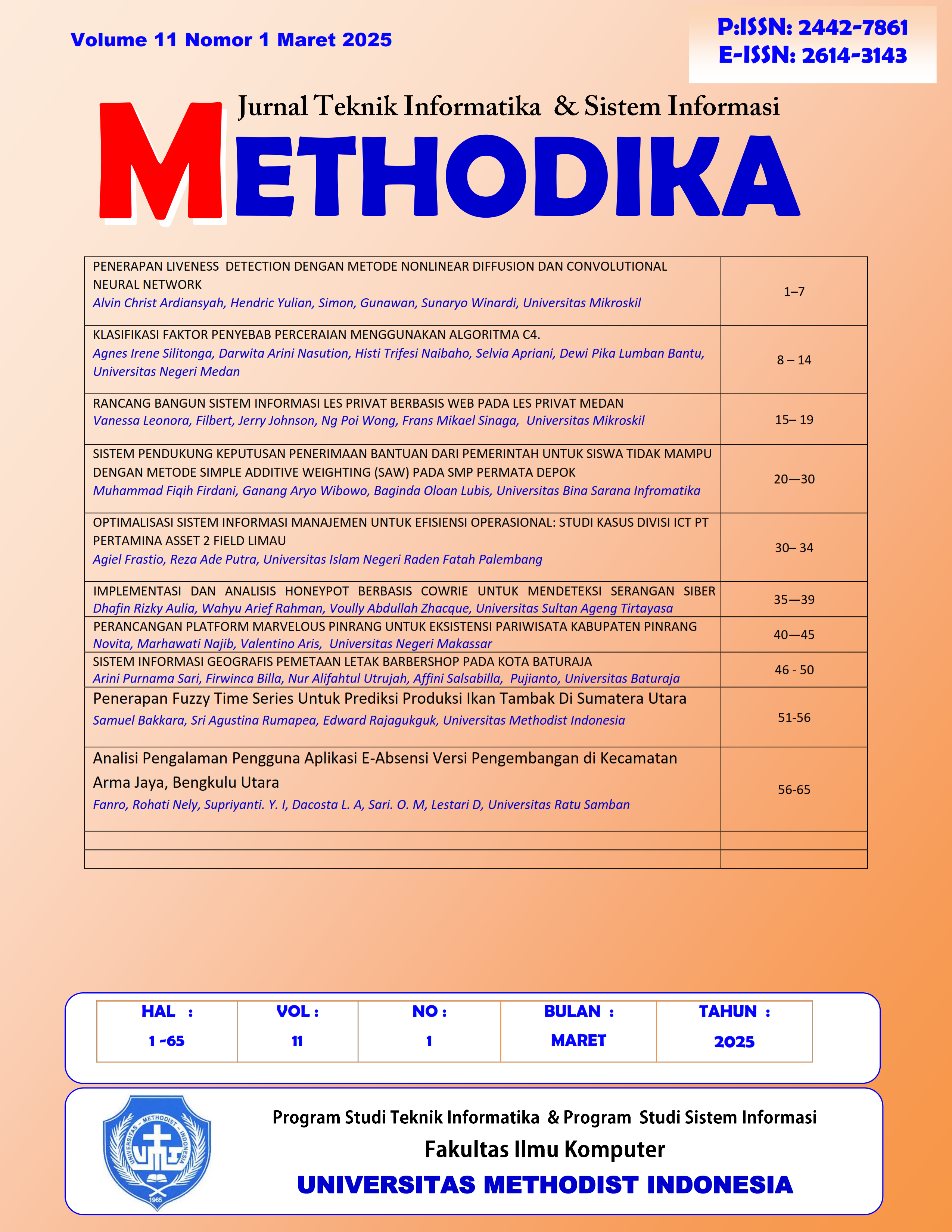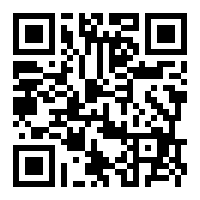PENRAPAN FUZZY TIME SERIES UNTUK PREDIKSI PRODUKSI IKAN TAMBAK DI SUMATERA UTARA
Keywords:
Pond_Fish_Production, Prediction, Fuzzy Time Series, Ikan_Tambak.Abstract
Fish is one of the most potential animal food products in Indonesia. Over the years, the majority of animal food consumption in Indonesia has been contributed by fish products. The increasing growth rate in North Sumatra is balanced by the food potential that can support the region's food security. Based on data from the fisheries sector potential in North Sumatra, pond fish farming in the province of North Sumatra covers an area of 20,000 hectares, spread across various districts/cities. The pond fish cultivated include catfish, catfish, tilapia, carp, snapper, milkfish, grouper. Given the potential of the pond aquaculture sector and the increasing awareness of the population in North Sumatra to consume fish as a source of nutrition, this research aims to predict pond fish production in North Sumatra. The prediction of pond fish production in North Sumatra is conducted to address the challenges of fluctuating pond fish production, uncertainty in supply and demand using the fuzzy time series method. The results of the study using the Fuzzy Time Series method in forecasting pond fish production in North Sumatra obtained forecast accuracy for catfish of 11.702%, for catfish of 10.359%, for tilapia of 21.636%, for carp of 15.788%, for snapper of 11.487%, for milkfish of 12.87%, for grouper of 12.263%, and for shrimp of 14.814%.).
References
T. Permatasari and D. Sukandar, “Prakiraan Produksi Ikan untuk Konsumsi Protein Hewani di Sumatera Utara,” J. Ilmu Gizi dan Diet., vol. 2, no. 2, pp. 141–148, Jun. 2023, doi: 10.25182/jigd.2023.2.2.141-148.
R. Ayuni and F. Saputri, “Penerapan Metode Fuzzy Time Series Untuk Prediksi Penjualan Berbasis Web Pada Toko Grosir 3 Roda Singkaling,” J. Mhs. Tek. Inform., vol. 3, no. 1, 2019.
D. H. Ramadhani, R. Srikandi, M. Ikhwan, and R. A. Saputra, “Penerapan Logika Fuzzy Dalam Klasifikasi Status Gizi Balita Di Puskesmas Pondidaha Menggunakan Metode Fuzzy Tsukamoto,” J. Inform. dan Tek. Elektro Terap., vol. 12, no. 2, 2024, doi: 10.23960/jitet.v12i2.4017.
D. I. D. Delo, “MENGGUNAKAN METODE FUZZY AHP DALAM MENENTUKAN,” pp. 370–377, 2024.
S. Yakub, A. Azanuddin, and J. Prayudha, “Implemetnasi Metode Fuzzy Associative Memory Dalam Menentukan Tingkat Kepuasan Pelayanan Di Perpustakaan,” Jurasik (Jurnal Ris. Sist. Inf. dan Tek. Inform., vol. 7, no. 1, p. 62, 2022, doi: 10.30645/jurasik.v7i1.416.
D. Purwanti and J. Purwadi, “Metode Brown’s Double Exponential Smoothing dalam Peramalan Laju Inflasi di Indonesia,” J. Ilm. Mat., vol. 6, no. 2, p. 54, Oct. 2019, doi: 10.26555/konvergensi.v6i2.19548.
M. R. Ramadhan, T. Tursina, and H. Novriando, “Implementasi Fuzzy Time Series pada Prediksi Jumlah Penjualan Rumah,” J. Sist. dan Teknol. Inf., vol. 8, no. 4, pp. 418–423, Oct. 2020, doi: 10.26418/justin.v8i4.40186.
Yehoshua, Kustanto, and R. V. Tri, “Prediksi Penjualan Produk Promo PT. Unilever, Tbk Menggunakan Metode Fuzzy Time Series,” Dec. 2020.
Downloads
Published
How to Cite
Issue
Section
License
Copyright (c) 2025 Samuel Bakkara, Sri Agustina Rumapea, Edward Rajagukguk

This work is licensed under a Creative Commons Attribution 4.0 International License.











